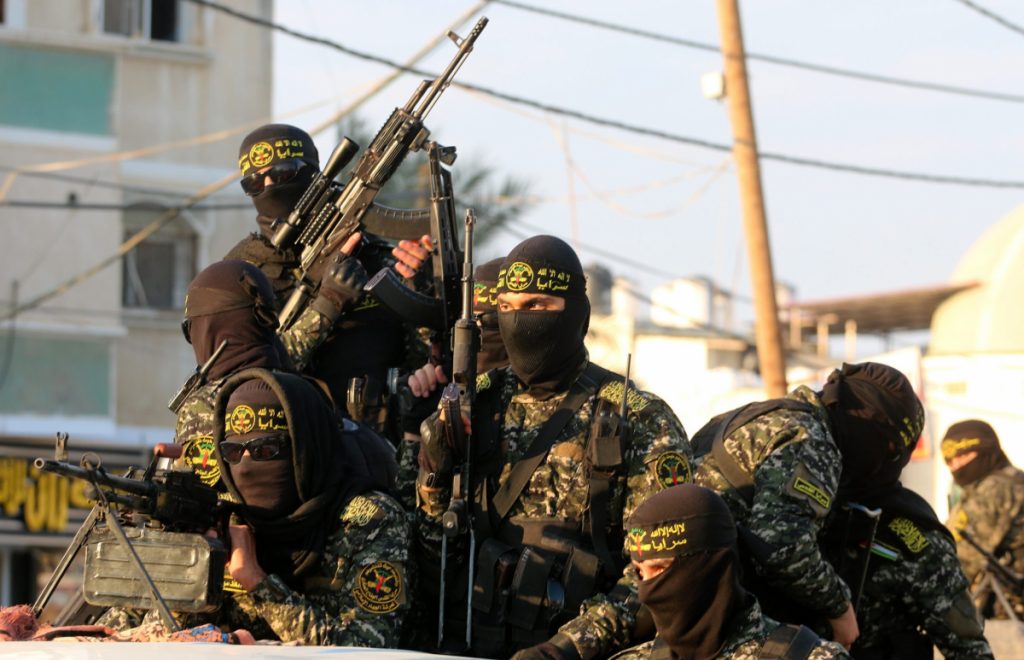IN THE MEDIA
The roots of Gaza’s ongoing tragedy
September 2, 2022 | Jamie Hyams

Jakarta Post – September 1, 2022
The recent conflict between Israel and elements in Gaza had some superficial differences to previous such conflicts, in 2008-2009, 2012, 2014 and last year, but at its heart, it was the same. As in the previous Gaza conflicts, Israel was protecting its civilians from terrorists bent on indiscriminately targeting them.
The roots of the most recent conflict go back to March and April this year, when Arab-Israeli and Palestinian terrorists killed 19 Israelis and wounded many more in a series of attacks on Israeli towns. Many of these attacks originated in the West Bank city of Jenin. On Aug. 1, Israeli forces arrested Bassam al-Saadi in Jenin. Al-Saadi is the head of the terror group Palestinian Islamic Jihad (PIJ) in the West Bank, and had been radicalizing PIJ operatives there, and building up the PIJ’s military capabilities.
In response, PIJ threatened to carry out attacks from Gaza, and Israel obtained concrete intelligence that the group was intending to target a civilian bus with anti-tank missiles. Egypt initiated behind-the-scenes negotiations to try to prevent violence, while Israel shut down traffic within range of Gaza.
However, once PIJ let it be known that it would proceed with its plans, Israel struck first to protect its civilians, killing PIJ’s head in northern Gaza, Tayseer al-Jabari, and some of his comrades, in an airstrike on Aug. 5, thus preventing the PIJ attack.
PIJ responded in its typical way, indiscriminately firing rockets at Israeli civilians, while Israel targeted those firing them, the rocket launchers and production facilities and other military infrastructure of those responsible. PIJ’s commander in southern Gaza, Khaled Mansour, who, like al-Jabari had been responsible for numerous terrorist attacks, was also killed in an Israeli airstrike, and PIJ’s entire upper military echelon was also killed.
By the time a truce was declared after three days of fighting, approximately 50 Palestinians had been killed, and PIJ had fired around 1,200 rockets at Israel, about 200 of which actually misfired and landed inside Gaza. Of those killed, around half were fighters from PIJ or other terrorist groups. Of the rest, most were killed by PIJ rockets, including four children at the Jabaliya refugee camp. Israel has distributed video of rockets falling short, and these misfires were also captured by media camera crews, and verified by the AP press agency.
The fighting was different to most previous outbreaks because it did not involve Hamas, the terror group that rules Gaza, and because it started as a result of Israeli pre-emptive action rather than as a response to attacks from Gaza. Nonetheless, as mentioned earlier, it was still the same as the others at its heart.
In each conflict, terror groups based in Gaza, mainly Hamas, fired rockets indiscriminately at Israeli civilians, while Israel targeted the terrorists. Israel has also protected its civilians with bomb shelters and the Iron Dome missile defense system, while the terrorists have used their tunnels, often under sensitive buildings such as hospitals, schools and mosques, to hide themselves and their weapons, or to try to infiltrate into Israel to attack more civilians.
The Gaza terror groups commit a double war crime – the firing of rockets at Israeli civilians, which is a war crime, while hiding among Gaza’s Palestinian civilians, also a war crime. In each conflict, the terrorists have hidden their rockets, launchers and other military infrastructure, including the attack tunnels, among the civilian population.
In each conflict, including the recent one, Israel has gone to extraordinary lengths to attempt to avoid civilian casualties in Gaza, often calling off or delaying a strike on a military target because civilians are present, or warning civilians to leave a building if it is about to be bombed. These warnings can be through leaflets, calling or texting mobile phones, or directing a small inert projectile at the roof, known as a “knock on the roof”. Israel does this even though it lets terrorists escape too.
Meanwhile, Hamas has been known to prevent Palestinian civilians from fleeing the danger. Tragically, despite these precautions, the terrorists’ tactics of sheltering among civilians make it inevitable that some are tragically killed.
Indeed, it’s a wholly unnecessary tragedy that these conflicts happen at all. In 2000, 2001 and 2008, Israel offered the Palestinians two-state peace deals that would have created a Palestinian state in Gaza and the vast majority of the West Bank, with a capital in Jerusalem. The Palestinian leadership consistently refused to say yes, or even propose a counter-offer.
In addition, in 2005, Israel completely withdrew from Gaza, leaving agricultural infrastructure, in the hope Gaza could become a self-ruled enclave living at peace, leading to further withdrawals in the West Bank, and ultimately peace. Sadly, the infrastructure was destroyed, Hamas took over, and there has been violence ever since, as Hamas and PIJ, directed and supplied by Iran, refuse to allow Israel to live at peace, regardless of the cost to their own people. This cost includes necessary blockades by Israel and Egypt to prevent the inflow of materials with military use.
Imran Khalid, writing in these pages, bemoaned the fact that the blood of Palestinians does not count in this game. Sadly, that seems true, but only in the calculus of the Palestinian terror groups that rule them.
The writer is a senior policy analyst at the Australia/Israel & Jewish Affairs Council.
Tags: Gaza, Hamas, Israel, Palestinian Islamic Jihad





